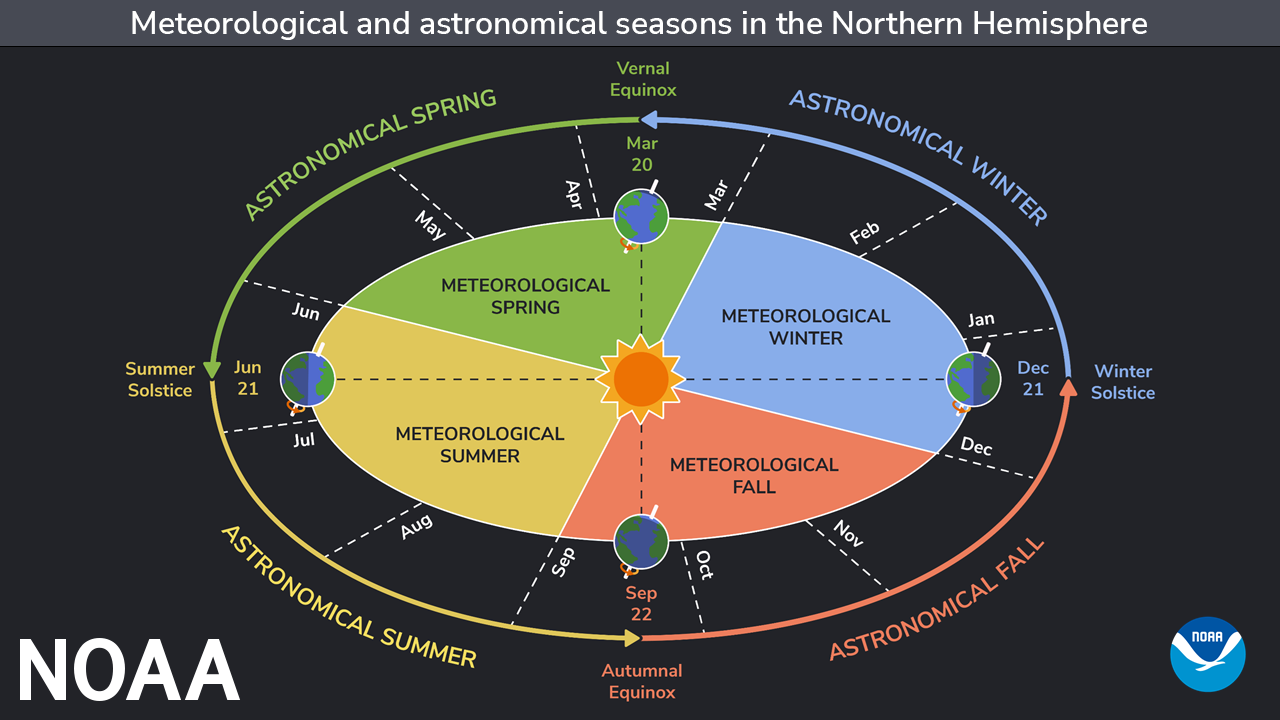The Difference Between Meteorological and Astronomical Seasons
Posted
Last Updated
By NOAA.
Astronomical seasons are based on the position of the Earth in relation to the sun, whereas meteorological seasons are based on the annual temperature cycle.

The Earth’s annual trip around the sun forms the basis for the astronomical calendar in which seasons are defined by two solstices and two equinoxes.
The Earth is tilted 23.5 degrees on its axis of rotation, and how the North Pole is oriented toward or away from the sun determines two of these astronomical dates. At the winter solstice, the North Pole is tilted away from the sun, whereas at the summer solstice, the North Pole is tilted toward the sun.
The equinoxes occur halfway between these events when the sun’s path is aligned with the Earth’s equator. The dates shown describe the astronomical seasons for the Northern Hemisphere in 2022; the exact dates vary slightly from year to year.
Meteorological seasons are broken down into groupings of three months in our civil calendar based on the annual temperature cycle. We generally think of winter as the coldest time of the year and summer as the warmest time of the year, with spring and fall being the transition seasons.
In the Southern Hemisphere, the seasons are reversed where summer occurs when the South Pole is oriented towards the sun, and winter happens when the South Pole faces away. (Image credit: NOAA Office of Education/Kaleigh Ballantine)
Read more at NOAA

